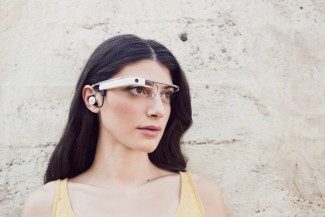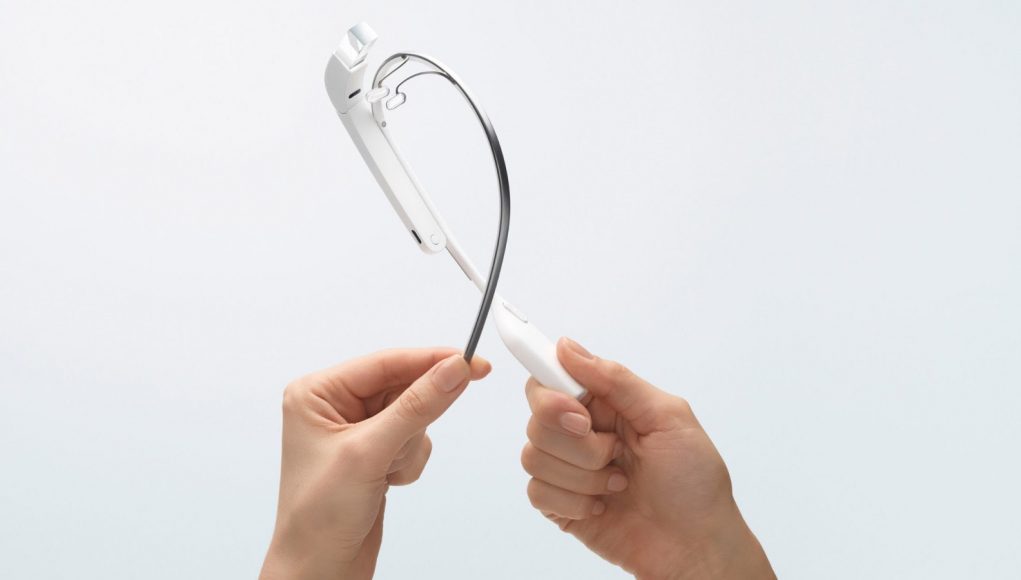Amidst a lot of exciting AR/VR news from Google this week during I/O 2017, a bit of sad news comes for any fans of the company’s ‘Project Glass’. The team within Google that worked on Glass is not collaborating with the Daydream/Tango VR/AR teams, a strong indication that there’s no plans to bring Glass forward into the fledgling era of immersive computing.
Although, generally speaking, Google Glass was not an augmented reality device (though it did have a few AR apps), it was an impressively engineered HUD headset that’s greatest technical contribution was perhaps a smart user interface for head-worn devices with touch input, while its greatest societal contribution was easing the world’s view of wearable technology. In 2017, with so much talk of head-worn devices as the future of immersive computing, it’s easy to see that Glass was ahead of its time.
 Among fans of the device (myself included), there was hope that after the Project Glass had “Graduated” from within Google’s secretive Google[x] in 2015 (also the origin of Tango, Google Watch, and more) the Glass team would be moving ahead with development of new and improved versions of the device.
Among fans of the device (myself included), there was hope that after the Project Glass had “Graduated” from within Google’s secretive Google[x] in 2015 (also the origin of Tango, Google Watch, and more) the Glass team would be moving ahead with development of new and improved versions of the device.
With the Glass team at the time teasing, “we’ve outgrown the lab and so we’re officially ‘graduating’ from Google[x] to be our own team here at Google. We’re thrilled to be moving even more from concept to reality,”—and especially with Google’s lead investment in Magic Leap’s $500 million Series B—it seemed only natural that the Glass team would be working alongside Google’s tightly knit VR and AR teams, Daydream and Tango, to help define the future direction of the company’s head-worn projects.
Sadly, Google has confirmed that the Glass team is not only not actively working with the Daydream and Tango teams, but those teams had little idea of what the Glass team is currently working on.
Speaking with Clay Bavor, Google’s VP of VR & AR, I asked if Glass was still alive. He paused for a few seconds, looking off into the distance as if searching his mind for a lost fact before answering.
“Um… I don’t know the details of that program. I think they may still be selling in small volumes the second version of it to enterprise largely. But I’m not sure…” and further confirmed, “[Glass is] not part of our team.”
 For me it was a sad confirmation that there’s almost certainly no secret Glass revival in the works; no new device to wow us with a forward thinking approach like the 2012 introduction of the headset; no effort to bring the “One Day…” concept vision of Glass to life.
For me it was a sad confirmation that there’s almost certainly no secret Glass revival in the works; no new device to wow us with a forward thinking approach like the 2012 introduction of the headset; no effort to bring the “One Day…” concept vision of Glass to life.
And, rather unfortunately, it seems the hard-won lessons learned by the Glass team have gone underutilized. I recall back in 2014, when reviewing the first Gear VR ‘Innovator Edition’, thinking that the headset’s touchpad-based interface was surprisingly immature and could learn a lot from the smart design of the Glass interface:
I would advise Oculus to pay closer attention to Google Glass […] which has already spent a decent amount of time figuring out how to navigate a similar interface with just a touchpad, and they’ve devised a number of useful gestures. In Glass, you can give the touchpad a quick swipe and it’ll scroll through lots of items with momentum. That would be handy in Gear VR as well (it’s actually present in at least one of the apps). For now it isn’t a huge problem because most lists aren’t that long, however, as the Store grows, the need for a quick way to get around will become clear.
Daydream ended up taking a pretty similar interface approach to Gear VR, and even still today, three years later, I think there’s lessons both could learn from Glass’ user interface design.







